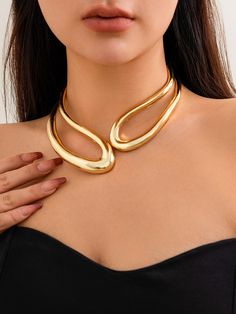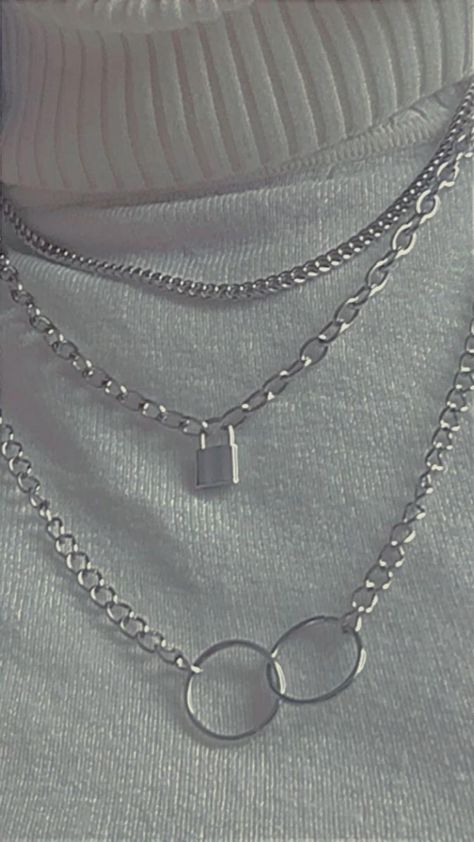Fashion Accessories Neckless
Fashion accessories play a crucial role in personal expression, with necklaces standing out as one of the most significant elements. They serve not only as adornments but also as powerful symbols of identity, culture, and personal style. From ancient civilizations to contemporary fashion runways, necklaces have evolved in design, meaning, and function. This exploration delves into the history, styles, cultural significance, and future trends of necklaces in fashion.
Historical Context
Ancient Origins

The history of necklaces can be traced back thousands of years to ancient civilizations. In ancient Egypt, necklaces were often made of gold and adorned with precious stones, serving both decorative and spiritual purposes. They were believed to hold protective properties, with amulets included to safeguard the wearer.
Similarly, in ancient Greece and Rome, necklaces were symbols of wealth and status. They were often crafted from materials like gold, silver, and semi-precious stones, showcasing intricate designs that reflected the artistry of the time. These adornments were not merely decorative; they were indicators of social standing and cultural identity.
Middle Ages to Renaissance
During the Middle Ages, necklaces often took on religious significance. Rosaries and pendants featuring saints were common, serving both as fashion accessories and symbols of faith. The Renaissance saw a resurgence of interest in classical styles, leading to elaborate necklaces featuring pearls, gemstones, and intricate metalwork.
By the 18th century, necklaces began to reflect the changing tastes of the upper class, with chokers and elaborate multi-strand pieces becoming popular among the elite. The use of color and texture in these designs marked a shift towards more artistic expression in jewelry.
19th Century to Modern Era
The Industrial Revolution revolutionized jewelry production, making it more accessible to the masses. The introduction of new materials, such as costume jewelry, allowed for creativity and experimentation. Necklaces became increasingly diverse in style, appealing to various tastes and social classes.
In the 20th century, fashion icons like Coco Chanel and Elizabeth Taylor further popularized the necklace as a key fashion accessory. The rise of Hollywood glamour brought about a renewed appreciation for statement pieces, often characterized by bold designs and luxurious materials.
The Evolution of Necklace Styles
Necklaces come in a myriad of styles, each reflecting different fashion trends, cultural influences, and personal expressions. Here are some of the most prominent styles:
1. Choker Necklaces
Chokers are short necklaces that sit snugly around the neck. They gained popularity in the 1990s but have seen a resurgence in recent years. Modern chokers often feature a variety of materials, including velvet, leather, and metal, allowing for both minimalist and statement-making designs.
2. Pendant Necklaces
Pendant necklaces consist of a chain with a hanging ornament, known as a pendant. These necklaces can be highly personal, often featuring charms that hold sentimental value, such as lockets containing photographs or symbols representing personal beliefs.
3. Statement Necklaces
Bold and eye-catching, statement necklaces are designed to stand out. They often feature large gemstones, intricate designs, or unique materials. These pieces are perfect for elevating a simple outfit, making them popular choices for special occasions and events.
4. Layered Necklaces

Layered necklaces involve wearing multiple necklaces of varying lengths and styles together. This trend allows for personalized expression, as individuals can mix and match different pieces to create a unique look. Layering has become a popular way to showcase personal style, combining delicate chains with bold pendants.
5. Beaded Necklaces
Beaded necklaces come in a wide array of colors, materials, and styles. They can range from simple, handmade pieces to intricate designs featuring semi-precious stones. These necklaces often carry cultural significance, as many cultures use beads in their traditional jewelry.
6. Long Necklaces
Long necklaces, often referred to as “rope necklaces,” can be worn in various ways—draped over the shoulders, knotted, or doubled for a layered effect. They offer versatility and can be dressed up or down, making them suitable for a range of occasions.
7. Multi-Strand Necklaces
These necklaces consist of multiple strands, adding depth and texture to the design. Multi-strand necklaces can vary from delicate chains to bold, chunky designs. They often make a significant fashion statement, enhancing both casual and formal outfits.
Cultural Significance
Necklaces hold various meanings across cultures and societies, often serving as symbols of identity, status, and tradition.
1. Cultural Symbols
In many cultures, specific necklace designs carry deep cultural significance. For example, Native American jewelry often features turquoise and silver, symbolizing protection and healing. In African cultures, necklaces made from beads or shells may signify status, age, or tribal affiliation.
2. Religious and Spiritual Significance
Many religions incorporate necklaces into their practices. Cross necklaces in Christianity symbolize faith, while the hamsa symbol in various cultures represents protection and good fortune. These necklaces serve as reminders of beliefs and spiritual connections.
3. Rites of Passage
In various cultures, necklaces are given as gifts during significant life events, such as weddings, graduations, or births. These pieces often hold sentimental value, representing love, support, and important milestones.
4. Fashion as Identity
For many individuals, the choice of necklace reflects personal identity and style. Fashion can serve as a form of self-expression, allowing people to showcase their individuality through their jewelry choices.
The Role of Necklaces in Contemporary Fashion
1. Fashion Statements

Necklaces play a pivotal role in contemporary fashion, serving as key elements in defining personal style. Designers often use necklaces to complement their collections, creating cohesive looks that enhance the overall aesthetic. A well-chosen necklace can elevate an outfit, transforming a simple look into a fashion statement.
2. Influence of Social Media
The rise of social media has significantly impacted how necklaces are perceived and worn. Influencers and celebrities showcase their favorite pieces, leading to trends that spread rapidly. Platforms like Instagram and TikTok have made it easier for consumers to discover new styles and brands, fostering a culture of inspiration and aspiration.
3. Sustainable Fashion Trends
With the growing awareness of environmental issues, many consumers are seeking sustainable and ethically made jewelry. Artisans and brands are focusing on eco-friendly materials, such as recycled metals and ethically sourced gemstones. This shift towards sustainability has led to an increased appreciation for handmade and artisanal necklaces.
4. Personalization and Customization
The trend of personalized jewelry continues to grow, with consumers seeking unique pieces that reflect their identities. Many brands now offer customizable necklaces, allowing customers to choose initials, names, or meaningful symbols. This trend fosters a deeper connection between the wearer and their jewelry, transforming necklaces into cherished keepsakes.
The Future of Necklaces in Fashion
1. Technological Innovations
As technology advances, we may see the incorporation of smart features into necklaces. Innovations such as wearable technology may allow for the integration of health monitoring, notifications, or even augmented reality elements. These advancements could transform how we perceive and use jewelry.
2. Inclusivity and Diversity
The fashion industry is gradually moving towards greater inclusivity and representation. As diversity becomes a focal point, we can expect to see a wider range of styles that cater to different cultures and identities. This evolution may lead to a richer tapestry of necklace designs that celebrate global influences.
3. Sustainable Practices
The push for sustainability will likely continue to shape the future of necklace design. Brands will increasingly prioritize ethical sourcing, fair labor practices, and environmentally friendly materials. Consumers will demand transparency from brands, leading to a shift towards responsible fashion.
4. Cultural Revivals
As fashion is often cyclical, we may witness the revival of vintage styles and traditional techniques in necklace design. Nostalgia for past decades can influence contemporary trends, leading to the resurgence of specific designs and aesthetics.
Conclusion
Necklaces are much more than mere fashion accessories; they embody a rich tapestry of history, culture, and personal expression. From ancient origins to modern trends, the evolution of necklaces reflects the changing dynamics of society and individual identity. As we look to the future, necklaces will continue to hold significance, adapting to new styles, values, and technological innovations.
In a world where fashion serves as a vital form of self-expression, necklaces will remain a cherished means of showcasing personal style, beliefs, and heritage. Their versatility and enduring appeal ensure that they will continue to play a prominent role in fashion, bridging the past with the future and celebrating the artistry of adornment.

